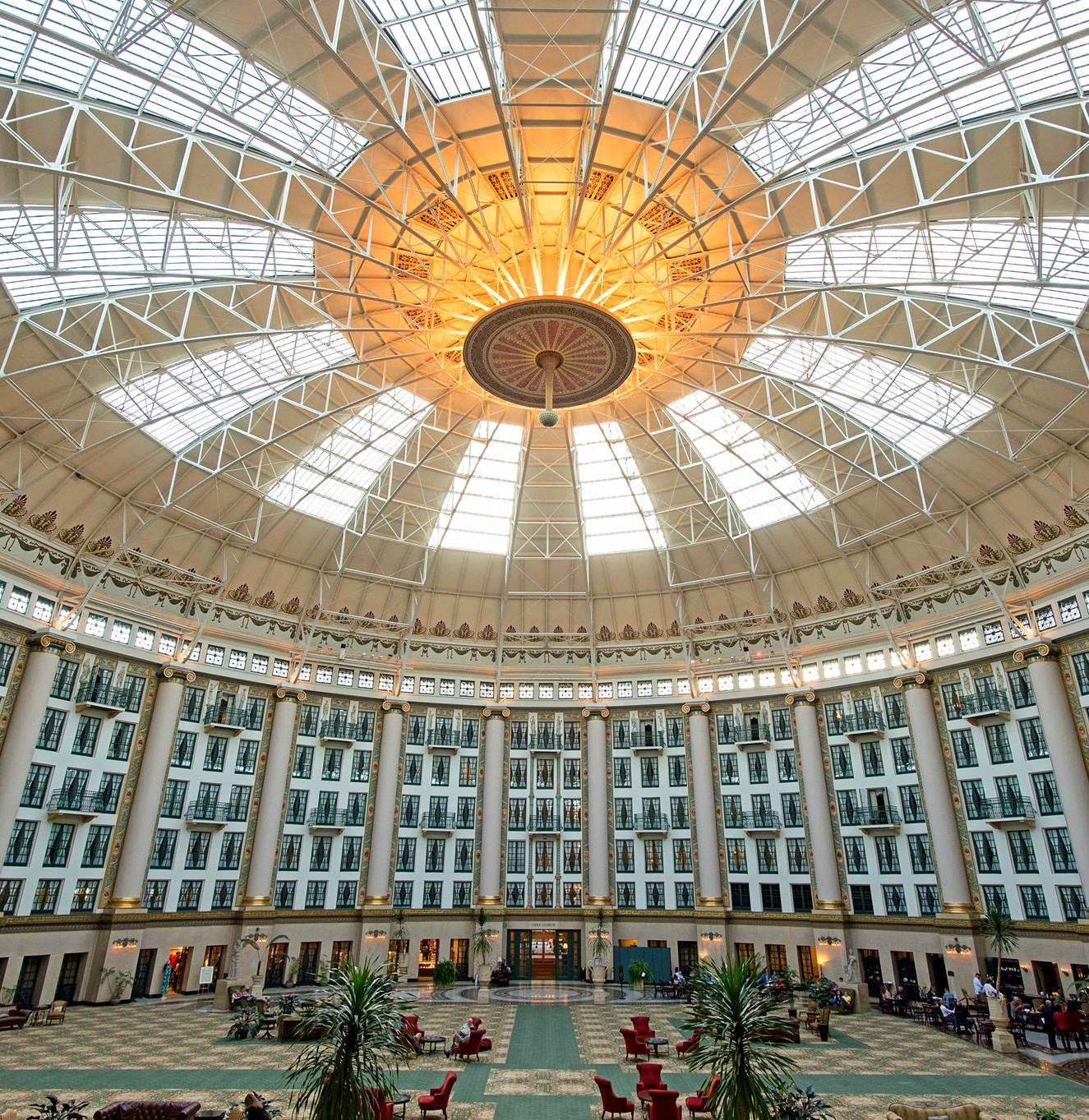Hotels with a Past
Hotel With A Past: French Lick Resort
Most people have never heard of French Lick. It’s a small town of 1,800 that some would say is in the middle of nowhere. But it’s located in southern Indiana. If you have heard of French Lick, it’s probably because you’re a basketball fan. Larry Bird, the NBA all-star grew up there. You can see images of Larry just about everywhere in French Lick: street signs, local bars, and even the local school. But here’s a little news bulletin: Larry doesn’t live there any more. However, a lot of history does. In one particular place, French Lick Resort, lies an amazing hotel with a past.
What started out as two separate hotels—the French Licks Springs Hotel in 1845 and the Baden Hotel in 1855—has been combined under one management and lovingly restored.
But what are these two hotels doing in a place called French Lick? Well, it’s all about the water. It goes back to 1845 when a physician from a neighboring small town began exploring the healing properties of the area’s mineral waters. Soon, he created a retreat, and when he built it, they came—by the hundreds.
The railroad arrived, and at the turn of the last century, the first golf course was built and the resort got bigger. But golf and French Lick goes beyond that. In 1924, the PGA arrived.
Sadly, the mineral springs were closed, and these two giant hotels started to fade until a concerted effort—requiring millions of dollars—commenced a major restoration.
Renovation Architect George Ridgeway was brought in to supervise. The hotel’s floor was originally covered by carpet. Once the carpet was pulled up, the staff discovered ceramic tile patterns. That’s not the only place you’ll notice small details—there’s also gold in the ceiling artwork. “There’s a lot of gold leaf in all the projects, not just West Baden or French Lick,” said Ridgeway. “We like to say there’s probably half a ton of gold leaf, but who’s counting.”
“We’ve been at it for, some of this 20 years,” Ridgeway continued. “We’ve spent $560 million on this project and we’re in it for the long hall.”
The two hotels are connected by an authentic diesel trolley that was built in Portugal in 1930. The trolley moves about 8 miles per hour and reaches a top speed of 12 miles per hour. You might be able to catch a ride on it with Sheryl Yeadon, the Trolley Supervisor, who talks about local history as the trolley rolls along. She’ll take you by the Indiana Railroad Museum, which was built by the Monon Railroad when the passenger train came in the late 1800s.
But at the top of the hotel is a small room—it’s not open to the public, and it is shrouded in mystery. It’s more like being on the inside of a steel drum, since it’s only 16 feet in diameter, with an aged wooden floor. That’s where you’ll find five faded frescoes painted on the wall, which include angels and cherubs. No one knows who painted them or when. But one thing is clear: It all happened before 1915, when graffiti covered some of the painted surface. Below the angels you’ll find a stunning singular piece of architecture and design.
The West Baden Springs Hotel’s Domed Atrium is 200 feet in diameter and has a 100-foot ceiling. It was the largest freestanding dome in the world until 1964, when the Houston Astrodome was built. But it’s still the largest freestanding dome in a hotel. If you stand in the center and clap your hands, you’ll hear more than one echo. According to George Ridgeway, there are 27 echoes.
At one point, the work was so challenging they thought they might be better off tearing down the dome. Thanks to a dedicated team that was passionate about preservation, they decided to restore the hotel and keep intact not only its history, but its secrets.
On these 3,000 acres in French Lick, the two hotels represent 161 years of history: The architecture, the art, the space, and the stories. Those stories still continue, because the folks here are finding out new things about these hotels almost every day.
Want to discover more unique hotels with a past? Check out:
By Peter Greenberg for PeterGreenberg.com










